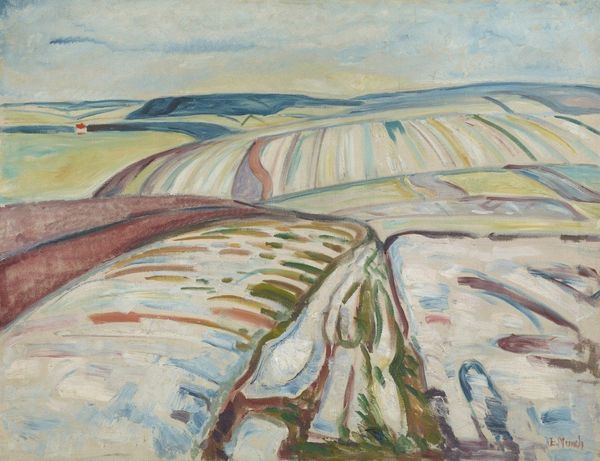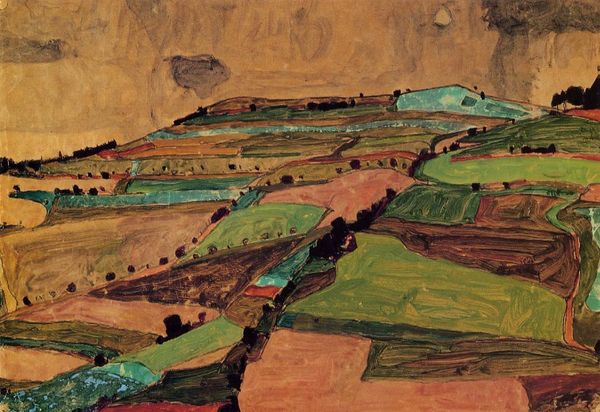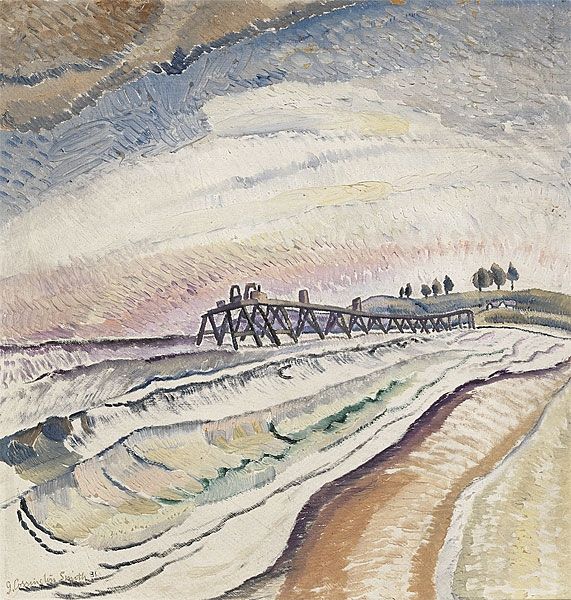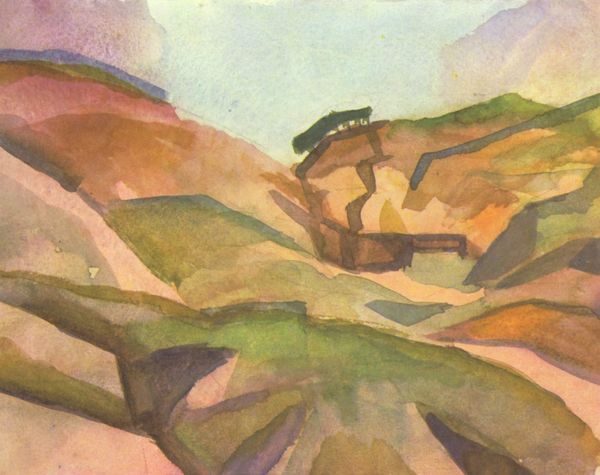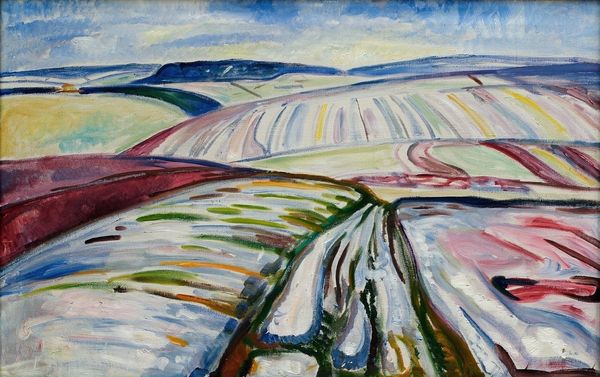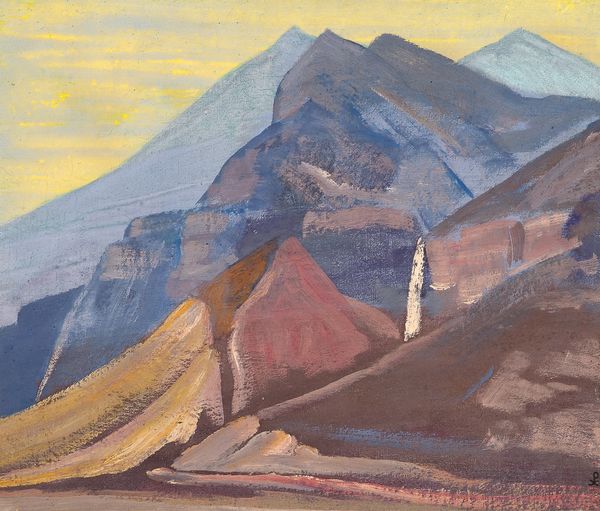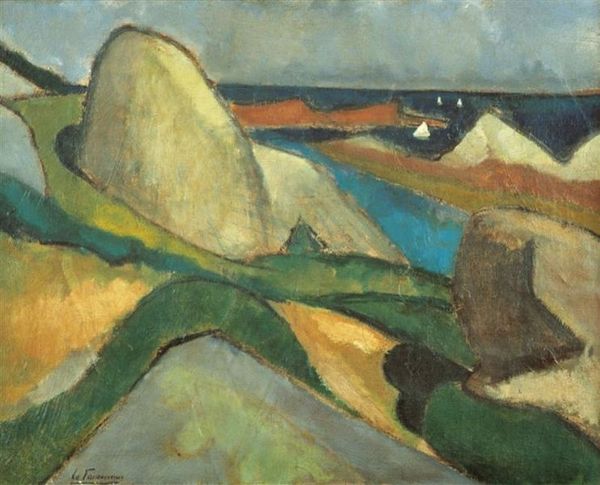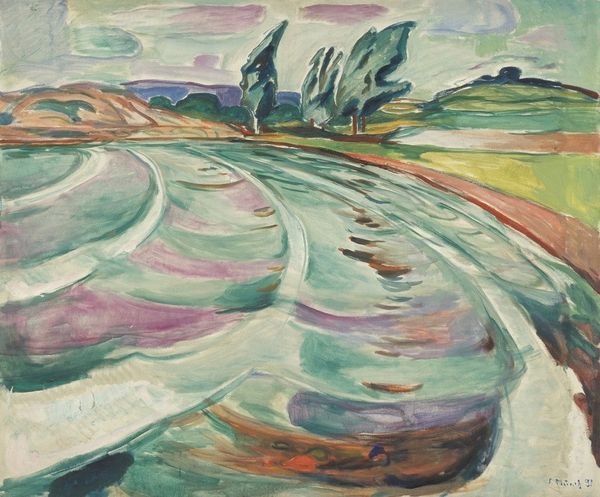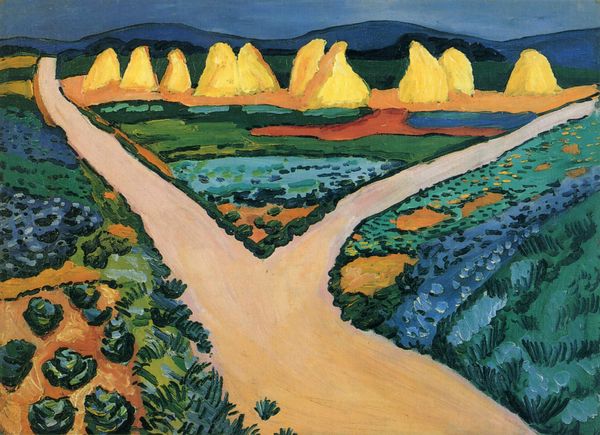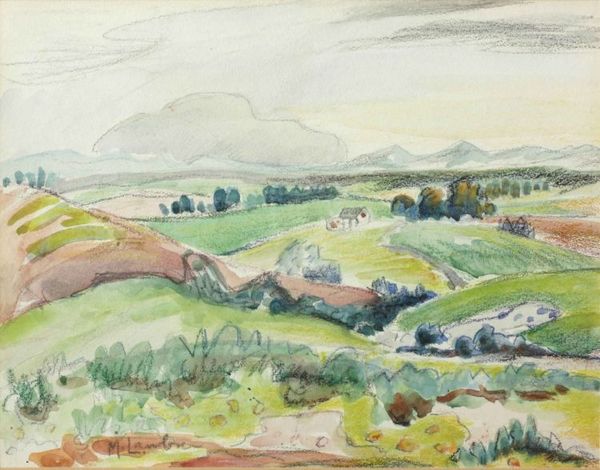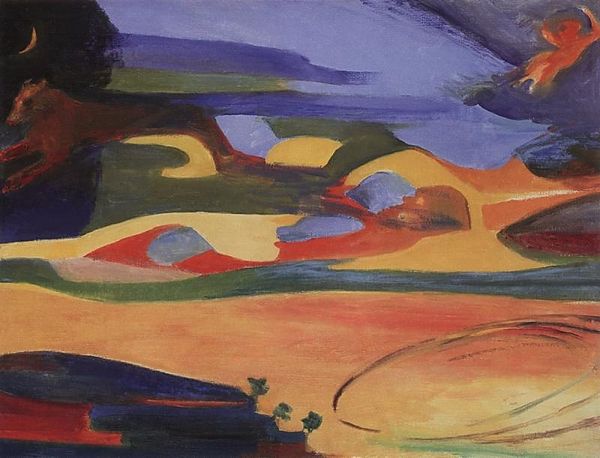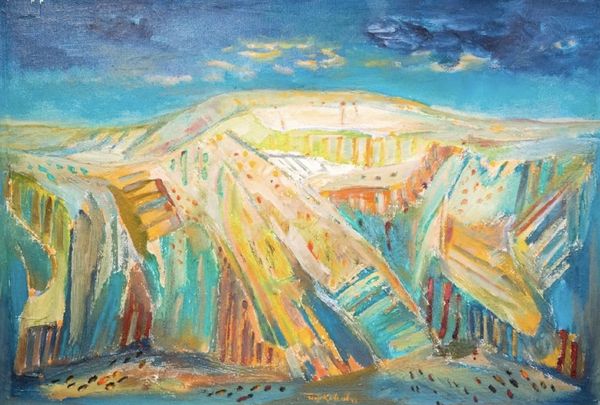
painting, oil-paint
#
painting
#
oil-paint
#
landscape
#
oil painting
#
geometric
#
modernism
#
realism
Copyright: Grace Cossington Smith,Fair Use
Editor: "Landscape at Pentecost," painted by Grace Cossington Smith in 1929. It's an oil painting, and I'm immediately struck by how she simplifies the landscape into these geometric shapes, especially with that strong, central road. It almost feels like I'm looking at a map. What do you see in this piece? Curator: What immediately grabs me is the intersection of the personal and the public. The "Pentecost" reference hints at a deeply personal, possibly religious, experience or inspiration for Smith. Yet, she translates it into a modernist visual language – the geometric forms you mentioned, the flattened perspective. What do you make of the almost utopian vision of the Australian landscape? Editor: A utopian vision? I hadn't thought of it that way. More… simplified, maybe. But Utopia suggests an idealised world, and perhaps the tidiness of the fields, the ordered trees, all point towards that. But where is the chaos of life, of poverty, of struggle that all existed in this period? Curator: Precisely. And that's where the socio-political reading comes in. The 1920s and 30s in Australia were marked by a burgeoning sense of national identity, often idealized around rural life, the "bush," and the pioneering spirit. So this landscape, while personal to Smith, also taps into a broader cultural narrative. In that sense it feels like it serves as propaganda. How do you think this ideal relates to Australia’s social and economic realities in that period? Editor: So, it's not just about seeing pretty fields; it's about understanding what those fields represented to a society at a particular moment. Were museums and galleries actively promoting this view of Australia at the time? Curator: Absolutely. Institutions like the Art Gallery of New South Wales, where Smith exhibited, played a crucial role in shaping and legitimizing this national narrative through carefully selected exhibitions and acquisitions. This artwork sits as a very good case study of personal intention meeting the public. Editor: This really changes how I look at landscapes now. It’s more than just pretty scenery. It's a window into how a society saw itself, or wanted to be seen. Curator: Exactly! Art doesn’t exist in a vacuum. Understanding its context, its public role, makes it so much more enriching.
Comments
No comments
Be the first to comment and join the conversation on the ultimate creative platform.
